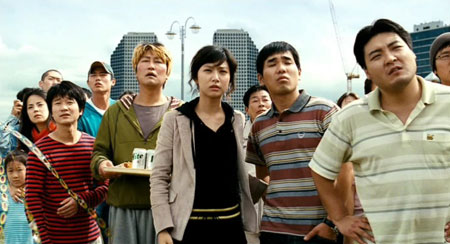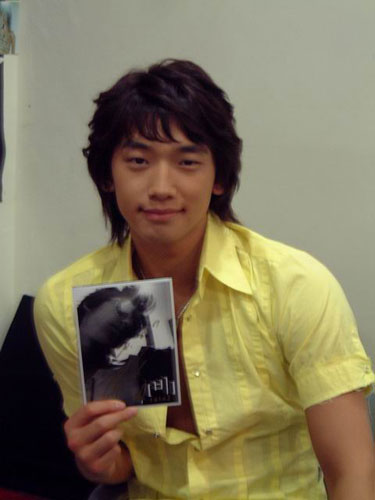Korean wave - regional response to global media power?

Frame grab from Gwoemul (The Host, South Korea 2006) – a record-breaking ‘creature feature’ with added social commentary.
Chinese stars are not the only border-crossing celebrities in East Asia. Since the early 2000s, there has been a ‘Korean wave’ (known as hallyu) in numerous Asian territories where Korean stars, soaps, films and pop music are commercially successful, challenging the markets for local media products. Since Shiri (Kang Je-Gyu, 1999), Korean cinema has seen many blockbusters and record-breakers, and consistent domestic and international box office successes. This has often been celebrated as a triumph over Hollywood’s global domination – the Korean government through its film policy and cultural discourse has encouraged patriotic consumption.

Rain, the Korean pop singer during a visit to Thailand, photo by Sry85
Co-produced Asian blockbusters often feature a mixture of Chinese, Korean and Japanese stars in order to diversify their markets. The 2003 Korean television series Jewel in the Palace (Dae Jang Geum) was shown in 11 Asian territories and further afield including Australia, US, Canada and New Zealand. Visit this official tourist site to learn about Dae Jang Geum. Many Asian stars are also simultaneous film, television and pop performers. One regional phenomenon is the actor/singer/model Rain (Jung Ji-Hoon) whose 2005 album ‘It’s Raining’ topped the charts simultaneously in South Korea, Japan, China, Taiwan, Thailand and Indonesia.
Further reading
Ravina, Mark (2009) ‘Introduction: Conceptualizing the Korean Wave’ Southeast Review of Asian Studies Volume 31, pp. 3–9 (Available to download here.)